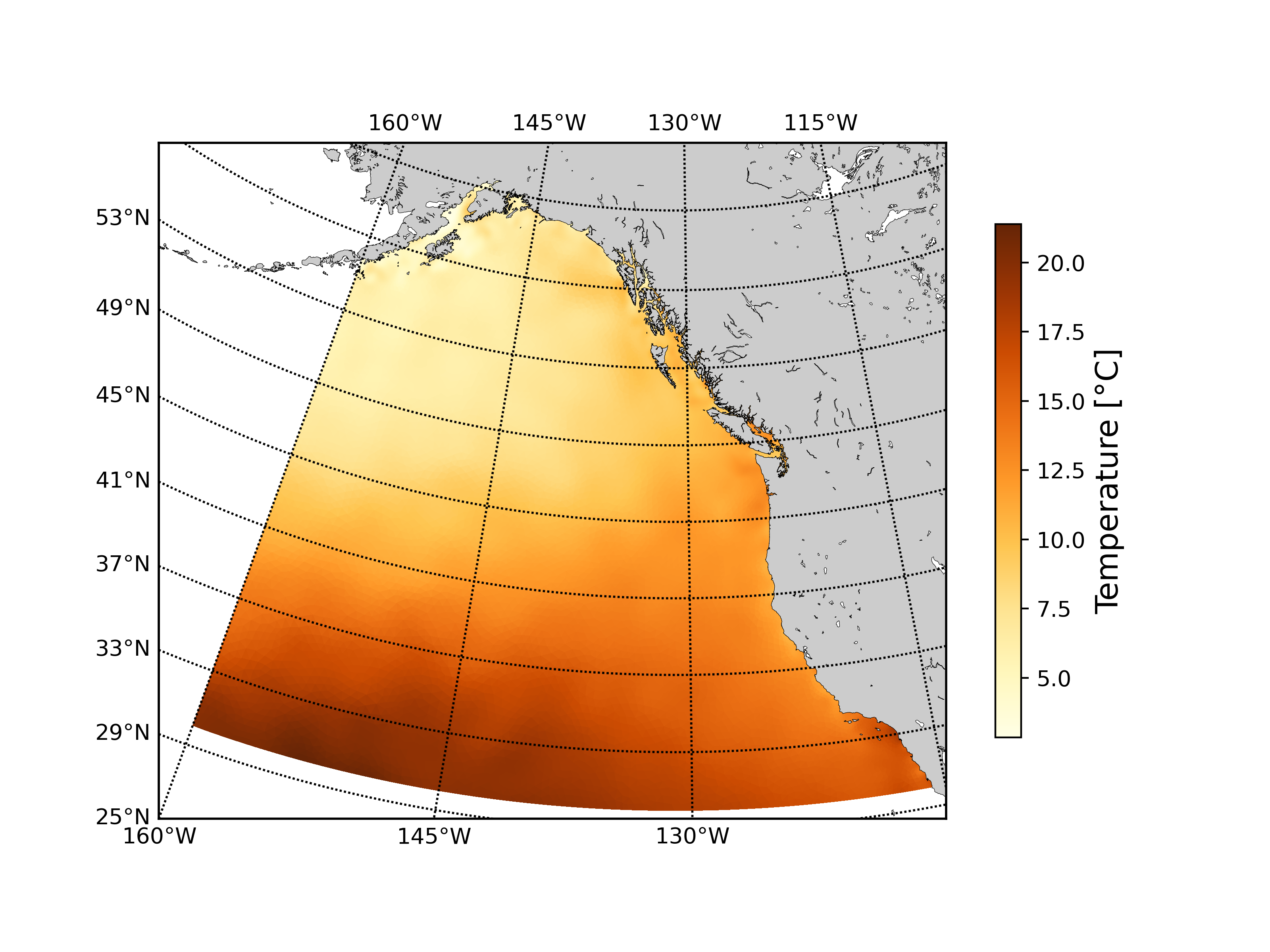RI_623
Type of resources
Available actions
Topics
Keywords
Contact for the resource
Provided by
Formats
Representation types
Update frequencies
status
Scale
-
The Water Survey of Canada (WSC) is the national authority responsible for the collection, interpretation and dissemination of standardized water resource data and information in Canada. In partnership with the provinces, territories and other agencies, WSC operates over 2800 active hydrometric gauges across the country. WSC maintains and provides real-time and historic hydrometric data for some 8000 active and discontinued stations. This dataset consists of a set of polygons that represent the drainage areas of both active and discontinued discharge stations. Users are encouraged to report any errors using the “Contact Us” webpage at: https://weather.gc.ca/mainmenu/contact_us_e.html?site=water
-

Maximum Temperature represents the highest recorded temperature value (°C) at each location for a given time period. Time periods include the previous 24 hours and the previous 7 days from the available date where a climate day starts at 0600UTC.
-
The Agri-Environmental Indicator Risk of Water Contamination by Coliforms provides two variables including the Soil Coliform Load and the Coliform Risk to Water. The Soil Coliform Load indicator is the estimated accumulation of coliforms on the soil and the Coliform Risk to Water indicator is the relative risk of coliforms getting into the waterways. Products in this data series present results for predefined areas as defined by the Soil Landscapes of Canada (SLC v.3.2) data series, uniquely identified by SOIL_LANDSCAPE_ID values.
-
The Indicator of Risk of Water Contamination by nitrogen (IROWC-N) estimates the risk of water contamination by nitrogen leaching on agricultural lands in Canada from 1981 to 2021. High nitrate level ( > 10 mg N/L) in drinking water may lead to various health impacts including methemoglobinemia (blue baby syndrome) and non-Hodgkin’s lymphoma. High nitrate levels in surface waters can also contribute to algal growth and eutrophication.
-

Dry spell periods are defined as the number of days (April 1 – October 31) where daily precipitation is less than 0.5 mm. This is not an accumulation of precipitation, simply a count of days. Dry spell products are only generated during the Growing Season, April 1 through October 31.
-

Description: Seasonal mean temperature from the British Columbia continental margin model (BCCM) were averaged over the 1993 to 2020 period to create seasonal mean climatology of the Canadian Pacific Exclusive Economic Zone. Methods: Temperatures at up to forty-six linearly interpolated vertical levels from surface to 2400 m and at the sea bottom are included. Spring months were defined as April to June, summer months were defined as July to September, fall months were defined as October to December, and winter months were defined as January to March. The data available here contain raster layers of seasonal temperature climatology for the Canadian Pacific Exclusive Economic Zone at 3 km spatial resolution and 47 vertical levels. Uncertainties: Model results have been extensively evaluated against observations (e.g. altimetry, CTD and nutrient profiles, observed geostrophic currents), which showed the model can reproduce with reasonable accuracy the main oceanographic features of the region including salient features of the seasonal cycle and the vertical and cross-shore gradient of water properties. However, the model resolution is too coarse to allow for an adequate representation of inlets, nearshore areas, and the Strait of Georgia.
-
The Agri-Environmental Indicator Risk of Water Contamination by Pesticides dataset reports the annual and semi-decadal status of pesticide transport to surface water, the concentration of pesticide in ground water, and the risk of water contamination by pesticide. Products in this data series present results for predefined areas as defined by the Soil Landscapes of Canada (SLC v.3.2) data series, uniquely identified by SOIL_LANDSCAPE_ID values.
-
30-year Average Number of Days with Temperature above 32 °C are defined as the count of the number of climate days during the month where the maximum daily temperature was greater than 32 °C. These values are calculated across Canada in 10x10 km cells.
-

A derivative of DFO’s benthic species survey for the Strategic Program for Ecosystem-based Research and Advice (SPERA) (open data record ID: e736c0f0-b19e-4842-903d-28bfc756d48a), this benthic survey funded through the Canadian Healthy Oceans Network (CHONeII) looks at the presence/absence and abundance of two biogenic habitat-forming species that are listed as vulnerable to disturbance in a subset of 50 drift camera transects in the ‘Head Harbour/West Isles Archipelago/The Passages’ Ecologically and Biologically Significant Area (EBSA) in the Bay of Fundy, New Brunswick, Canada (~113km2). Presence/absence and abundance data of the stalked sea squirt (Boltenia ovifera) and horse mussel (Modiolus modiolus) were derived from the use of high-resolution Nikon D800 36.1 megapixel still images (n=2576, see link to parent record for more descriptive survey information) to be used in species distribution modelling. Image field of view (FOV) was estimated using a 10 cm-wide trigger weight for scale,and standardized across images using the average FOV estimate (0.75 x 0.5 m) across a subset of 200 images. Species counts were then converted to abundance estimates (number of individuals per square-meter) by dividing counts by 0.375m2. Boltenia ovifera was observed at densities reaching 456 ind./m2, while Modiolus modiolus density reached a maximum of 240 ind./m2. Cite this data as: Mireault C.A., Lawton P., Devillers R. and Teed L. Presence/absence and abundance of vulnerable marine ecosystem species Boltenia ovifera and Modiolus modiolus in the lower Bay of Fundy derived from high resolution still imagery. Published September 2023. Coastal Ecosystems Science Division, Fisheries and Oceans Canada, St. Andrews, N.B. https://open.canada.ca/data/en/dataset/152ae3f1-d2b9-43d9-a7b4-d769d9e9fc41
-
Full rupture of the Cascadia interface fault, the fault defining the boundary between the North American and Pacific Ocean plates. This magnitude 9.0 event, often referred to as ‘The Big One’, affects most communities in southwestern British Columbia.
 Arctic SDI catalogue
Arctic SDI catalogue